“How long does it take to bike a mile?” is a question frequently asked by cyclists and fitness enthusiasts alike. The answer varies from a swift journey to a more moderate trek and is influenced by several factors.
Cycling is a practical mode of transportation and an excellent form of cardiovascular exercise. It enhances stamina and promotes overall health. The time it takes to cover a mile on a bike is influenced by the cyclist’s fitness level, the terrain, weather conditions, and the bicycle itself.
Needless to say, understanding these elements can optimize your cycling experience. In this blog post, we’ll address the question, “How long does it take to bike a mile,” and offer tips to improve your cycling time for a better ride and explore the many health benefits it brings.
How Long Does It Take to Bike a Mile?
The following are a few factors that influence biking time.
1. Terrain
- Flat Surfaces: Cyclists can maintain a consistent speed with minimal resistance, leading to faster travel times. The uniformity of the terrain allows for a steady rhythm, making it easier to predict time estimates for journeys.

- Uphill Terrain: It can drastically increase biking time. The gravitational pull requires cyclists to exert more effort, reducing their speed and increasing the duration of the trip. Moreover, the steepness of the incline is directly proportional to the time taken to reach the summit; the steeper the hill, the slower the pace, and the longer it will take to reach the summit.

- Downhill Terrain: It can decrease biking time as gravity accelerates the cyclist’s speed. However, safety becomes a paramount concern. The need for cautious navigation to avoid accidents can temper the potential time saved. Additionally, factors such as surface conditions and weather can further affect the biking time on different terrains.
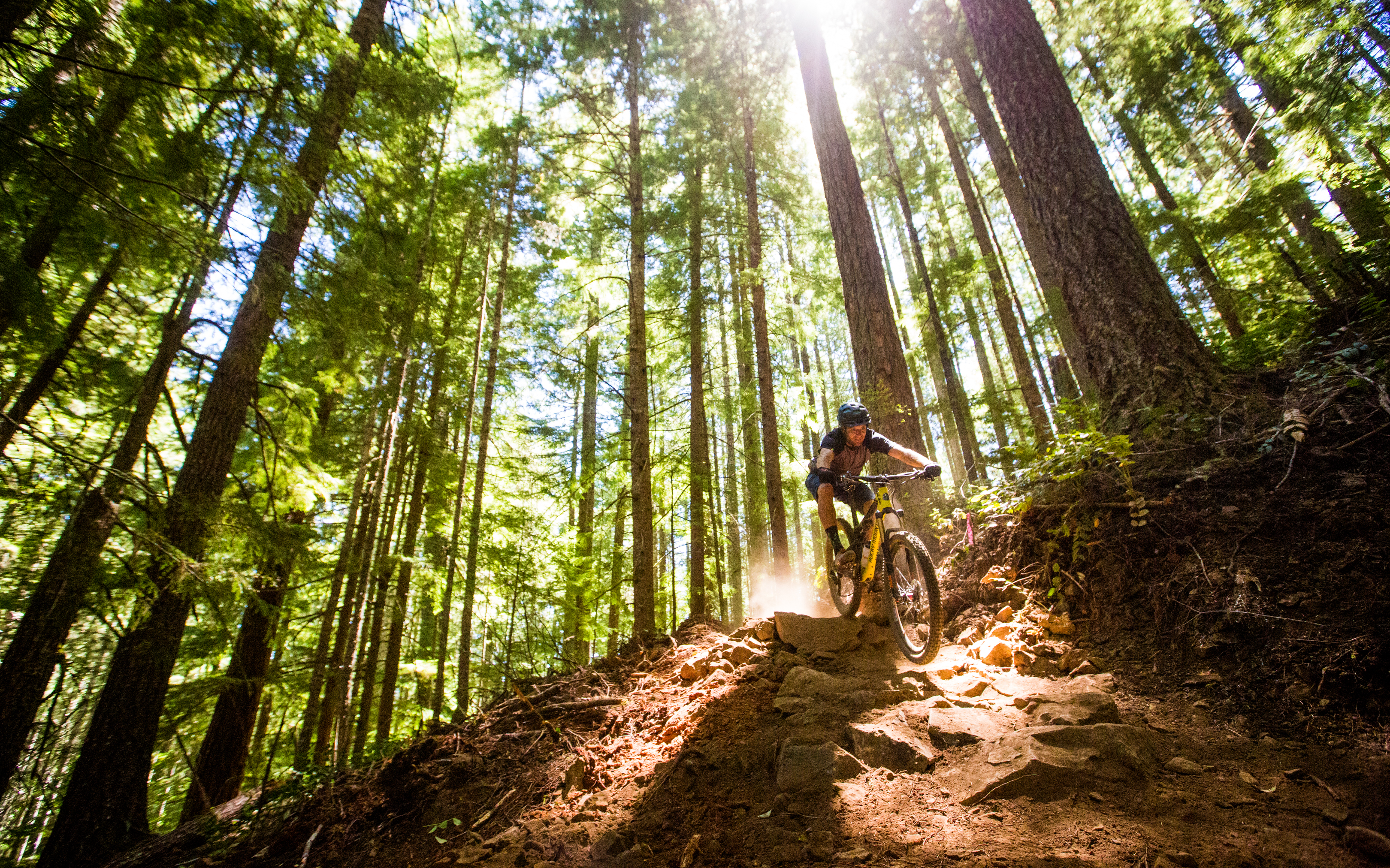
2. Fitness Level
Cyclists with higher fitness levels possess greater endurance, allowing them to maintain higher speeds over longer distances. Their muscular strength enables them to tackle challenging terrains, such as steep inclines, without significant speed reductions.

In contrast, bikers with lower fitness levels may reduce their speed considerably, especially when facing demanding conditions. Lack of stamina can lead to frequent breaks and slower speeds, extending the overall biking time. Even flat terrains can be taxing for these cyclists after extended periods, as fatigue sets in more quickly.
Bikers need to assess their fitness levels and plan their routes accordingly. By doing so, they can set realistic time goals and ensure a safe and enjoyable biking experience. Regular training can improve fitness levels, leading to better performance and reduced biking times.
3. Bike Type
- Road Bikes: Designed for speed and efficiency on paved surfaces, these bikes have lightweight frames and smooth tires that reduce rolling resistance, allowing for swift travel. This design is optimal for maintaining high speeds on flat and downhill terrains, contributing to reduced biking times.
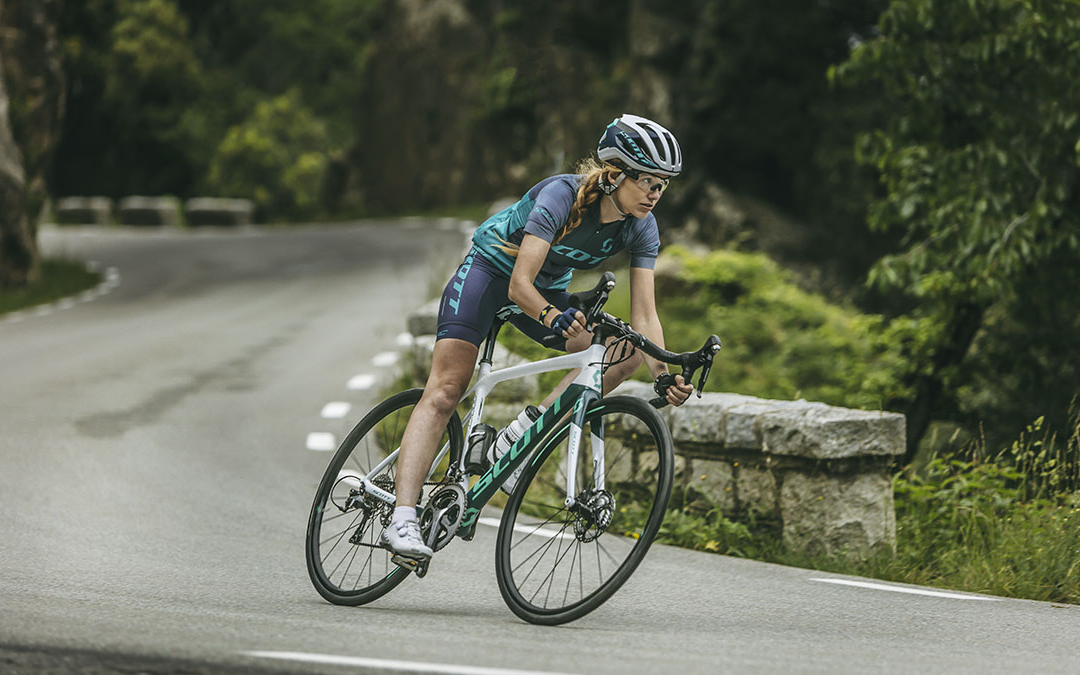
- Mountain Bikes: With their sturdy frames and wide, knobby tires, mountain bikes are built for rugged terrain. Their increased grip and shock absorption make them ideal for off-road trails, but they also result in increased resistance and slower speeds on paved roads. Consequently, mountain bike riding times can be longer than road bikes when covering the same distance on a smooth surface.
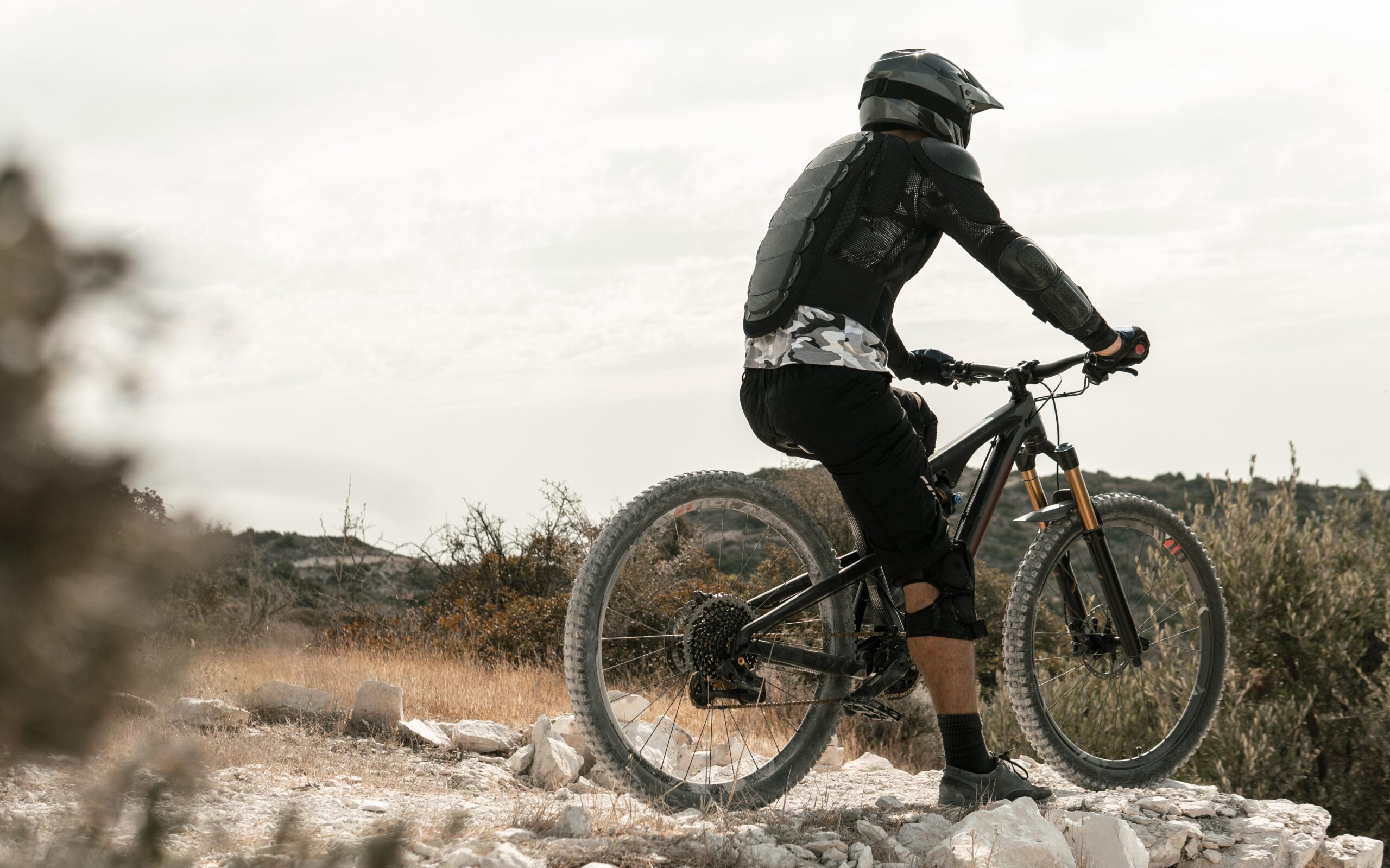
Hybrid Bikes: They combine features from road and mountain bikes, offering a balance between speed and versatility. While they can handle a variety of terrains better than specialized bikes, they may need to be more efficient in specific conditions, leading to moderate biking times.
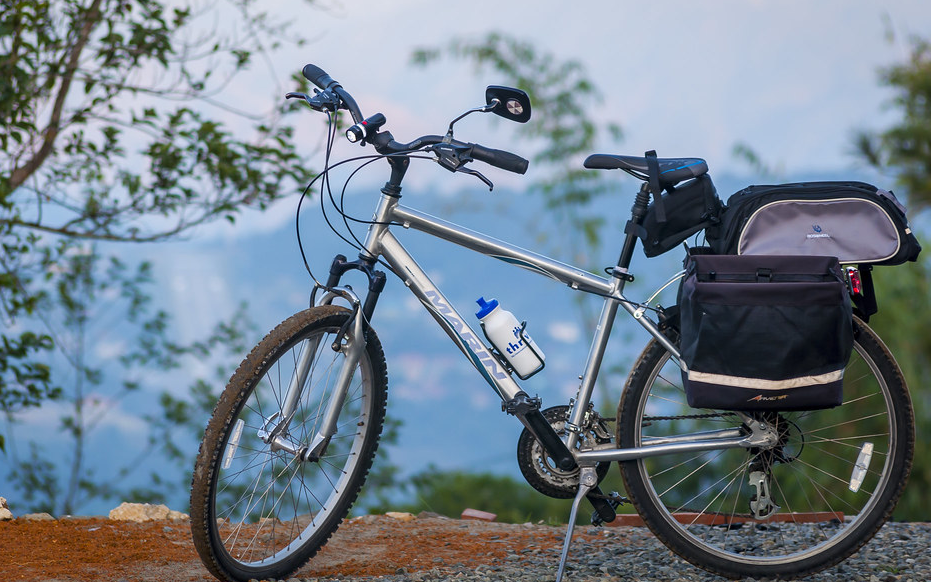
4. Weather Conditions
Weather conditions significantly influence biking speed and safety. Favorable conditions, such as a clear day with mild temperatures, can enhance performance and reduce biking times. Cyclists can maintain a steady pace without the hindrance of adverse weather elements.
Conversely, inclement weather, like rain or strong winds, can increase resistance and decrease visibility. Wet surfaces increase the risk of accidents and require cautious riding, inevitably slowing down the cyclist. Headwinds can be particularly challenging, as they force bikers to expend more energy to maintain speed, increasing biking time.
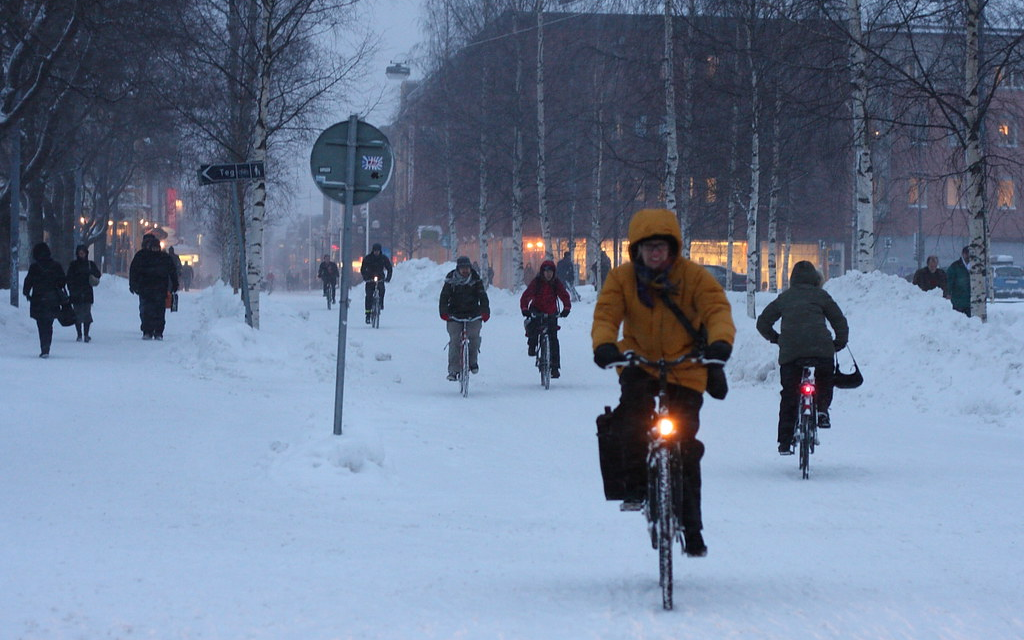
Extreme temperatures, whether hot or cold, can also affect a cyclist’s endurance and concentration. Overexertion in high heat can lead to dehydration and heat exhaustion. Cold weather can cause muscle stiffness and reduced agility, prolonging biking time and compromising safety.
5. Rider Experience
Seasoned riders possess the technique and knowledge to effectively navigate various conditions, from pacing themselves on long rides to handling technical terrains. They can make split-second decisions that save time and maintain momentum.
For beginners looking to increase their speed, it is essential to focus on building a solid foundation of skills. This includes practicing proper pedaling techniques, learning to shift gears efficiently, and developing a sense of rhythm.
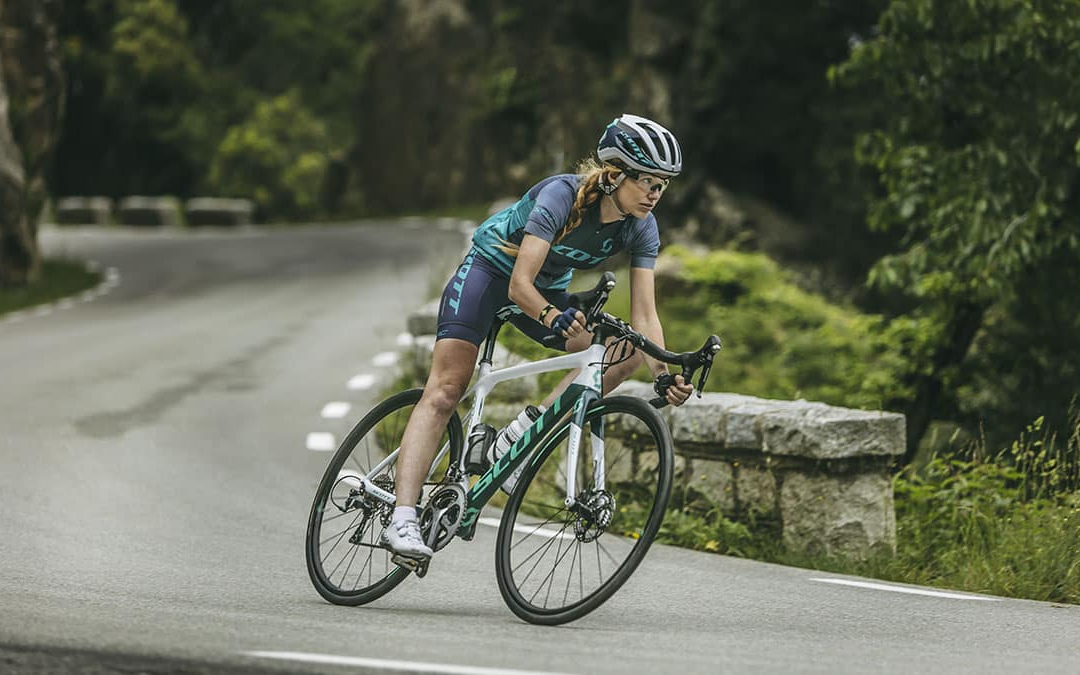
Additionally, new riders should gradually increase their distance and intensity to build stamina and strength, which is critical for faster biking times. Consistent practice and patience are essential to evolving from a novice to an adept cyclist.
Average Biking Speeds
Another frequently asked question is, “How long does it take to bike a mile on average?” The average speed of cyclists varies widely based on several factors.
Generally, recreational bikers ride at 12-14 mph on flat terrain, while more experienced cyclists may average 15-20 mph. Competitive road cyclists can sustain speeds exceeding 25 mph. However, these benchmarks can fluctuate due to the cyclist’s fitness level, the bike’s type and condition, the terrain, and weather conditions.
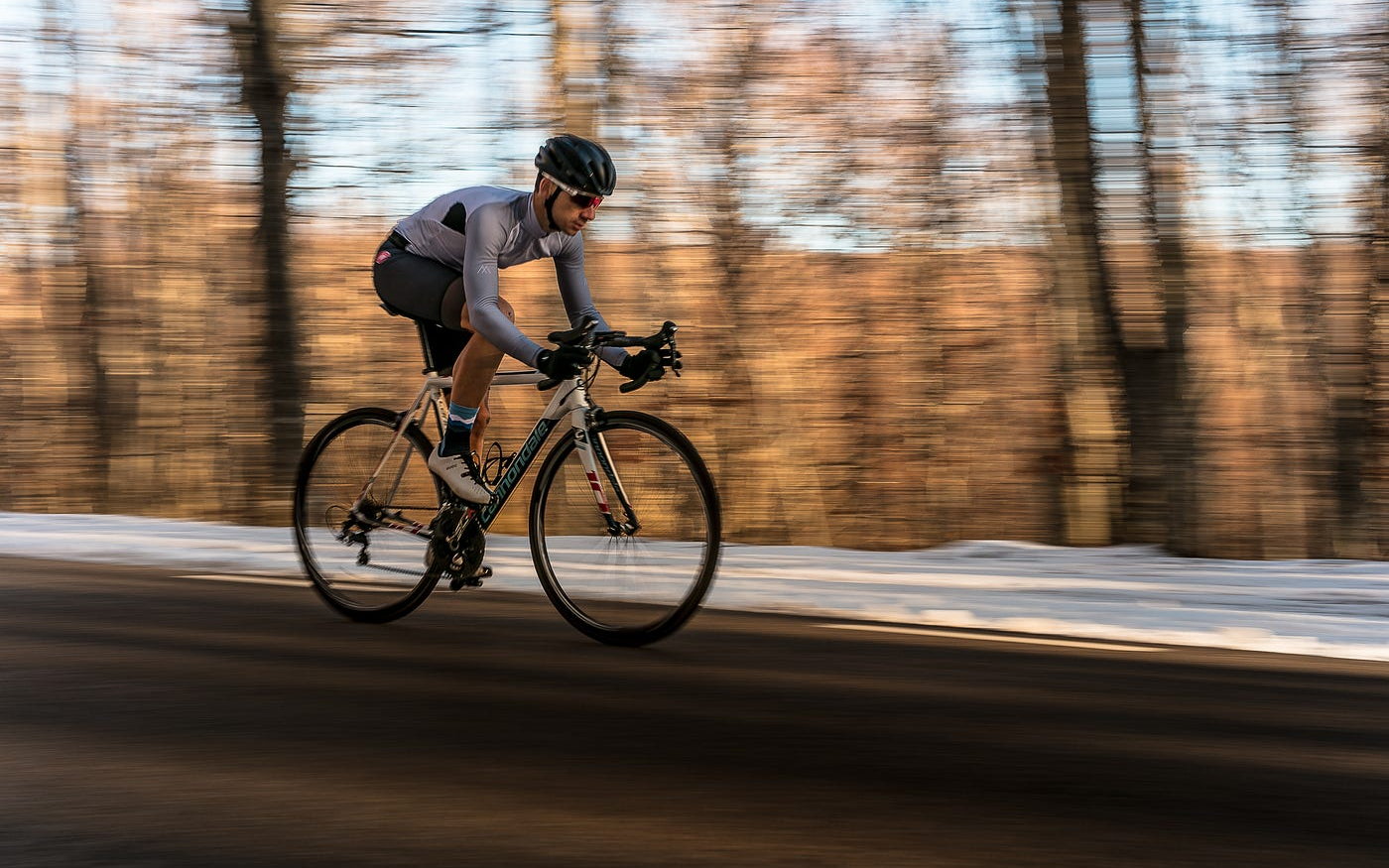
A cyclist’s proficiency and endurance play significant roles; seasoned riders can maintain higher speeds for longer. The bike’s design also affects speed; road bikes are typically faster than mountain or hybrid bikes on paved surfaces.
Terrain also influences speed; riders move slower uphill but can gain speed on descents. Weather conditions, including wind and precipitation, can impede progress or, conversely, provide a tailwind that boosts speed.
Understanding these factors can help cyclists set realistic speed goals and improve their performance. By considering personal fitness, equipment, and environmental conditions, cyclists can optimize their travel times and enjoy a more efficient cycling experience.
Training Tips to Improve Biking Speed
A multifaceted approach encompassing endurance, strength, and technique is essential to enhancing biking speed. For endurance, cyclists should incorporate interval training into their routine, alternating between high-intensity sprints and recovery periods. This boosts cardiovascular capacity and simulates the varying speeds encountered during a ride.
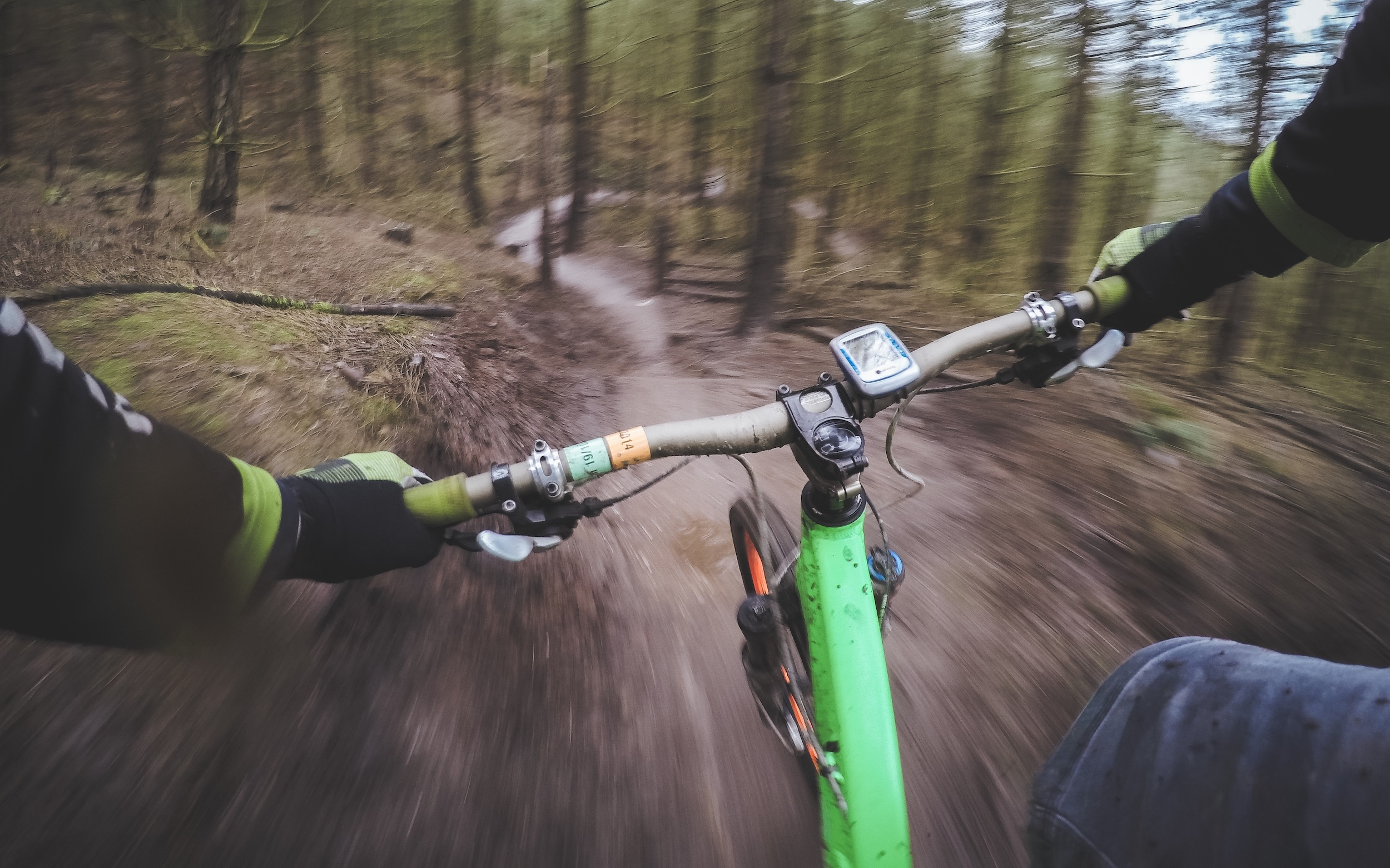
Long, steady rides are equally important, as they condition the body for prolonged exertion and improve overall stamina. Strength training is another critical component, focusing on lower body exercises such as squats, lunges, and calf raises, which fortify the muscles pivotal for pedaling power.
Core-strengthening workouts, including planks and bridges, stabilize and support the cyclist’s body, improving control and efficiency. Technique refinement is the final piece of the puzzle. To reduce fatigue, cyclists should practice maintaining proper posture, with a slight bend in the elbows and a relaxed grip on the handlebars.
Perfecting pedal strokes to ensure a smooth, circular motion can minimize energy waste and increase speed. By integrating these training tips, cyclists can see marked improvements in their biking speed, leading to more efficient and enjoyable rides.
Safety Considerations
Prioritizing safety is paramount for cyclists. Essential gear such as certified helmets and high-visibility clothing significantly reduces the risk of injury. Helmets are a cyclist’s first line of defense against head trauma, while reflective attire ensures they remain visible to motorists, especially during low-light conditions.

Adherence to traffic laws cannot be overstated; obeying signals and markings prevents accidents and promotes harmonious sharing of the road. Regular bike maintenance is equally crucial.
Ensuring brakes are responsive, tires are properly inflated, and all components are in good working order enhances performance and prevents malfunctions that could lead to accidents.
Proper gear, law compliance, and consistent maintenance allow cyclists to enjoy a safer riding experience and contribute to a safer environment for all road users.
Conclusion
Hope you have found your answer to “How long does it take to bike a mile?” in this detailed guide. Similarly, on average, a mile can be biked in 3 to 7 minutes. This range accounts for the diversity of cyclists’ experiences, from beginners to seasoned riders.
Understanding these elements is crucial for individuals aiming to gauge their biking times accurately. By considering personal pace and environmental conditions, cyclists can set realistic expectations and improve their performance.
Remember, consistency and practice are vital to enhancing biking efficiency and speed. Now, get on your bike and enjoy the journey towards your cycling goals.
FAQs
6-8 minutes, depending on terrain and rider skill.
3-4 minutes, influenced by speed and road conditions.
Yes, consistent daily biking and a balanced diet can contribute to weight loss.
The fastest recorded 1 mile time on a bike is 1 minute and 54.7 seconds, set by Sam Whittingham in 2009.



